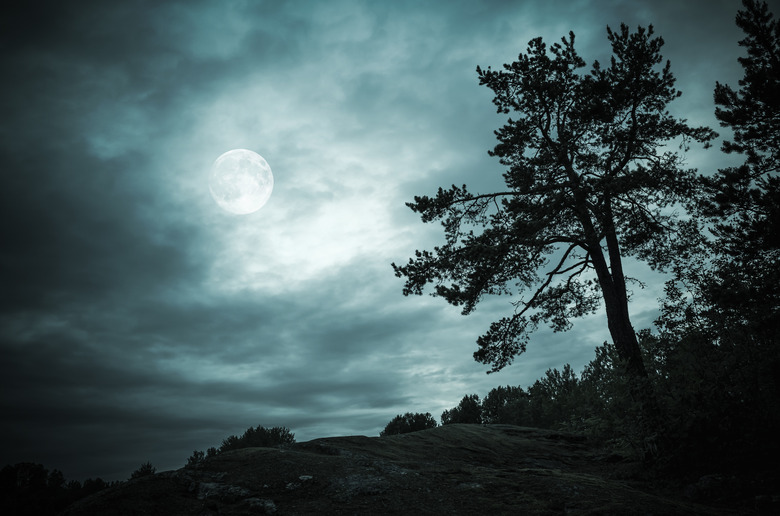Is The Moon Visible All Of The Time?
From the Earth's vantage point, the moon puts on a slow, shape-shifting celestial dance over the course of its phases. A number of factors, however, affect its visibility. The moon's phases, position in the sky and weather conditions all contribute to whether or not you can see the familiar satellite. It is usually easy to understand why you can't see the moon on a given night.
TL;DR (Too Long; Didn't Read)
Aside from cloud cover and sunlight, the moon is visible every day in each 24-hour cycle of the earth's rotation, even if you're at the north or south pole.
Phases
Phases
The moon travels through eight phases over the course of a lunar cycle. Waxing crescent occurs as the moon approaches first quarter. First quarter occurs on the way to becoming full, when half of the moon is visible. Waxing gibbous occurs on the way to a full moon, when more than half of the moon is visible. Full moon occurs when the entire disk of the moon is illuminated. Waning gibbous occurs after full moon. Last quarter occurs after waning gibbous, when half of the moon is visible. Waning crescent is the crescent phase after last quarter. Finally, new moon occurs when no sunlight is reflected by the moon. During the new moon phase, the moon is not visible. Sometimes it can be detected by noting the visible absence of the stars that it blocks. Additionally, during new moon, sometimes enough light is reflected off the surface of the Earth that the disk of the moon is faintly visible.
Position in the Sky
Position in the Sky
As the moon travels through its phases, it also moves across the sky. If the moon is not visible during the night, it may have been visible during the day. Over the course of a day, the moon moves approximately 13 degrees eastward in the sky. Therefore, it is not always visible at the same time each day or in the same location of the sky.
Visibility During the Day
Visibility During the Day
The degree to which the moon is visible during the day is closely linked to its phase. During full moon, the moon is opposite the sun in the sky. Therefore, the moon will be in the sky roughly while the sun is not. During other phases, the moon may be more visible during the day because it is closer to the sun in the sky.
Weather Conditions
Weather Conditions
On a completely overcast night or day, you will not be able to see the moon due to cloud cover. On these occasions, you may still have evidence of the moon's presence. For example, you may see light behind the clouds during nighttime. This is probably light from the moon. On an overcast day, the moon will not reflect light brighter than the light emitted by the sun, so this effect will not be seen.
Only One Side Faces Earth
Only One Side Faces Earth
As the moon revolves around the Earth, the moon rotates on its own axis. These two processes happen at the same rate. Therefore, the same surface of the moon is always facing the Earth, and the rest of the moon is always pointed away from the Earth, hidden from the eyes of humanity.
Cite This Article
MLA
Murmson, Serm. "Is The Moon Visible All Of The Time?" sciencing.com, https://www.sciencing.com/moon-visible-time-5168/. 5 April 2018.
APA
Murmson, Serm. (2018, April 5). Is The Moon Visible All Of The Time?. sciencing.com. Retrieved from https://www.sciencing.com/moon-visible-time-5168/
Chicago
Murmson, Serm. Is The Moon Visible All Of The Time? last modified March 24, 2022. https://www.sciencing.com/moon-visible-time-5168/
